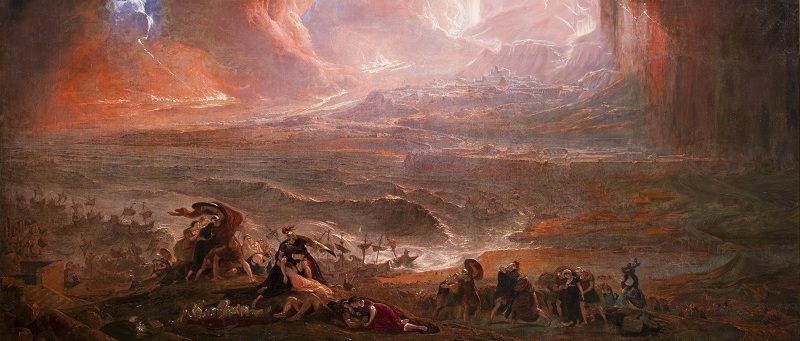The Destruction of Pompeii
Posted on 26th December 2020
Founded around the seventh century, Pompeii was a town on the Bay of Naples in Campania at the base of Mount Vesuvius. Over time it grew to a town of around twenty thousand people.
Each summer the population of Pompeii would swell, it was a popular resort with wealthy Romans and many had holiday villas situated there. The town had an amphitheatre and palaestra (gladiatorial school), but not the bustling shops, cafes and restaurants of its neighbour Herculaneum.
People living in the area were used to minor tremors from Vesuvius and did not concern themselves with them. Pliny the Younger wrote about tremors ‘(They) were not particularly alarming because they are frequent in Campania’, however in 62AD the area suffered a major earthquake it would take years to recover from. Recovery work was still being undertaken when Vesuvius erupted in 79AD.
On 24 August 79AD an explosion shook Pompeii. Rock and ash were sent fifteen kilometres (over nine miles) into the sky creating a black cloud that covered Pompeii sending the town into darkness. Many people fled the town at this time, but the ones that stayed had sealed their fate.
Millions of tonnes of pumice and ash fell on Pompeii. People that had tried to protect themselves by staying inside buildings were crushed to death when the roofs caved in on them.
Vesuvius sent molten lava surging into the sky. The town of Herculaneum being closer to the volcano than Pompeii was covered in this lava; killing people where they stood. The bodies were incinerated and turned into charcoal from the heat.
As Vesuvius erupted again, molten lava was pouring towards Pompeii; with it was sent a toxic gas, which killed many before the lava ever reached the town.
Molten lava now completely covered Pompeii and Herculaneum with tens of thousands of people dead. There would be no rescue mission that could combat against the force of Vesuvius.
The ruins of Pompeii and Herculaneum stand testament today to the power of a volcano and the devastation it leaves in its wake.
Tagged as: Junior Ancient Rome
Share this post:





